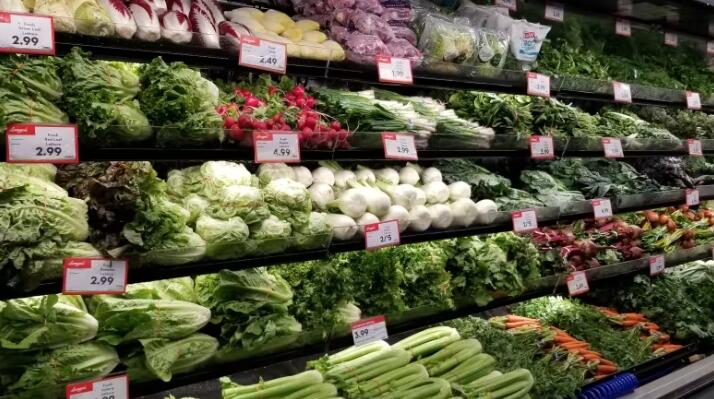Inflation rate drops to 5.2% in February — but grocery prices are still up

Rate previously slowed to 5.9 per cent in January
Canada’s inflation rate cooled to 5.2 per cent in February, the largest deceleration since April 2020, according to Statistics Canada.
The agency said its consumer price index had a year-over-year deceleration from February 2022, when the inflation rate was 5.7 per cent.
The reading compared with an annual inflation rate of 5.9 per cent in January and was the lowest reading since January 2022, when it was 5.1 per cent.
- Canada’s inflation rate slowed to 5.9% in January, but food costs continue to rise
- Inflation rate slows to 6.3% — but groceries are still going up at nearly twice that pace
Statistics Canada noted that the decline was due to a steep monthly increase in prices in February 2022, when the global economy was significantly affected by the Russian invasion of Ukraine.
Groceries outpacing overall inflation
Despite the overall cooling, grocery prices remained elevated and outpaced overall inflation.
Prices for food purchased from stores in February were up 10.6 per cent compared with a year ago, the seventh consecutive month of double-digit increases.
Supply constraints and bad weather in food growing regions continue to put upward pressure on prices. Fruit juice in particular was up 15.7 per cent — the cost of orange juice, for example, has increased due to the prevalence of fruit-killing citrus greening disease and climate-related disasters like Hurricane Ian.
Cereal products, sugar, and fish, seafood and other marine products continued to see accelerated price growth. On the other end of the spectrum, price growth for non-alcoholic beverages, meat, vegetables and veggie preparations, and bakery products slowed.
Meanwhile, energy prices were down 0.6 per cent year over year as gasoline prices fell 4.7 per cent compared with a year ago, when prices began to rise. It was the first yearly decline for gasoline prices since January 2021.
Excluding food and energy, Statistics Canada said prices in February were up 4.8 per cent compared with a year ago, following a 4.9 per cent year-over-year gain in January.
The annual inflation rate peaked at 8.1 per cent in June 2022, but has been declining.
Putting food on the table during Ramadan
Shahid A. Khan, the executive director of Muslim Welfare Canada, which runs several food banks serving the Muslim community in southern Ontario, said that most of their food donations arrive during the holy month of Ramadan.
Ramadan, which starts on Wednesday and ends on April 22, is marked by a month-long fast that begins every day at sunrise and ends after sunset. The end of the fast is marked by a daily meal called Iftar.

“People really like to enjoy the month of Ramadan. But these days, it’s very tough,” said Khan. “There’s lots of people [who have] lost their jobs, and a large refugee community is coming.”
Monsurat Olawumni, a first-time client at the organization’s Scarborough, Ont., food bank, heard about its services through her friends.
“It has been crazy, hasn’t it? Lots of things are very, very expensive here now,” she said, later pointing to the cost of chicken and rice. “It is very, very difficult to live, to get food for your family or your children.”

Muslim Welfare Canada is aiming to serve about 7,000 families this month, but demand is rising simultaneously with the cost of groceries. The price of cooking oil alone has almost doubled, Khan said.
“I remember I used to buy $1.99 for two litres. Now it’s about $4.99,” he said. Prices for rice, sugar and flour have also gone up, he noted.
“This is a very tough Ramadan for some people, but our duty is to help the community.”
Interest rate hikes on pause for now
The Bank of Canada, which is working to bring overall inflation back to its target of two per cent, left its key interest rate target unchanged earlier this month at 4.5 per cent.
- Bank of Canada holds interest rate steady
It was the first time the central bank kept its key policy rate on hold since it began raising it last year in an effort to cool rising prices.
The average of the three core measures of inflation that are closely watched by the Bank of Canada eased to 5.37 per cent in February compared with 5.57 per cent in January.
Related News
Trade war, slumping border traffic: What does that mean for the Gordie Howe bridge?
Amid U.S. President Donald Trump’s tariffs which have triggered a trade war with Canada, cross-border trips haveRead more
Trump administration threatens Harvard’s foreign enrolment, tax-exempt status
U.S. Homeland Security Secretary Kristi Noem speaks during an event on April 9, in Washington,Read more
